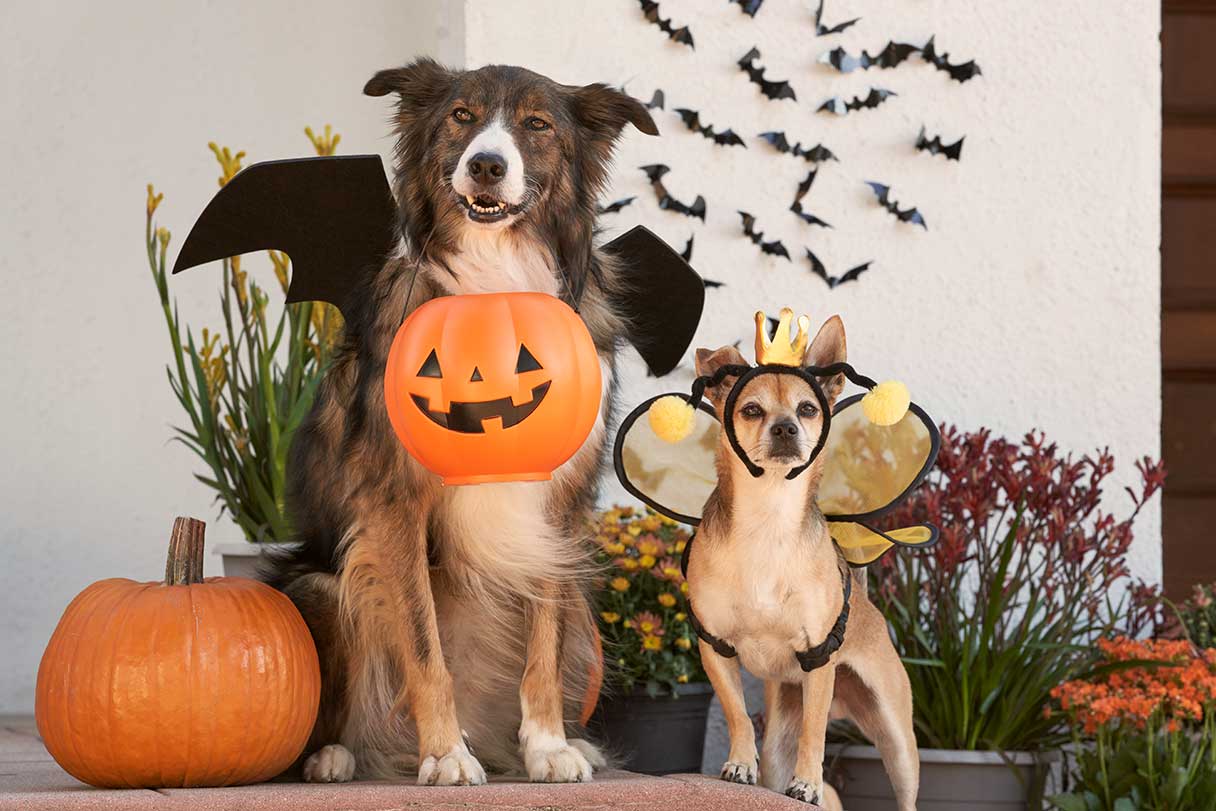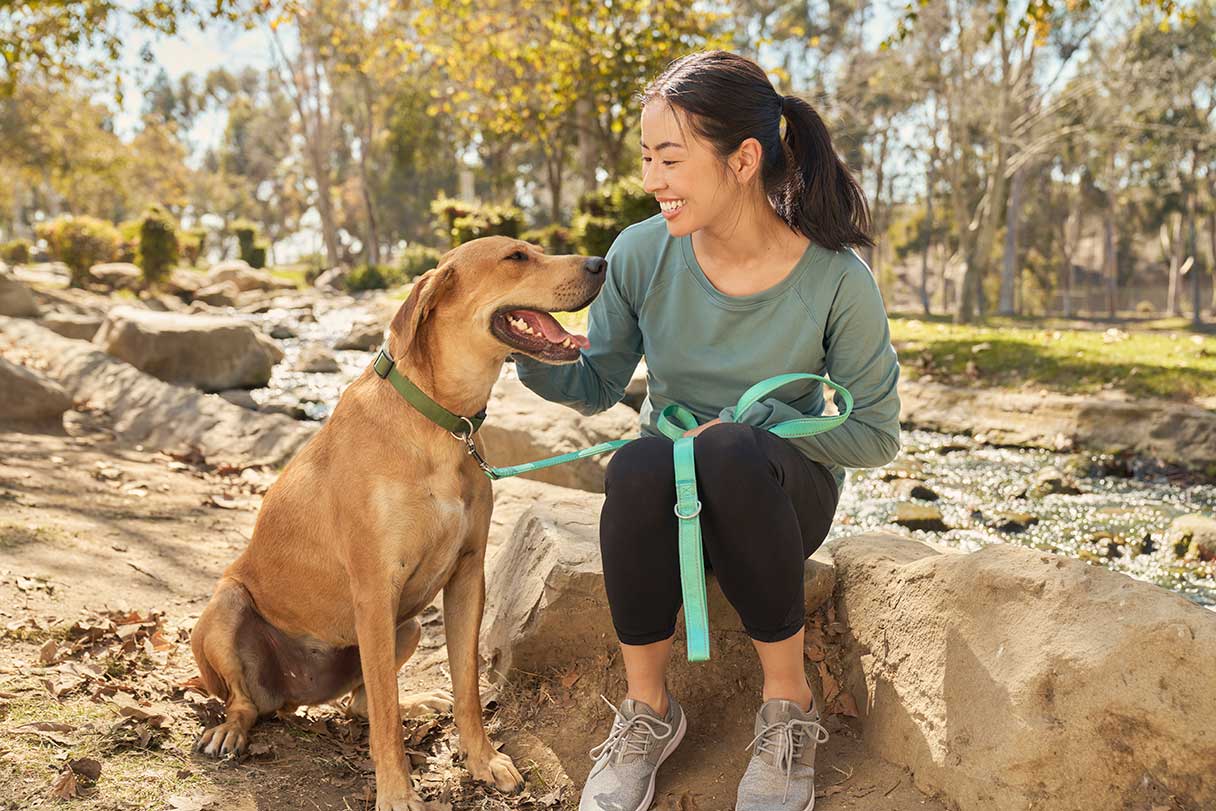
Most dogs love spending time outside, especially with their favorite humans. But the outdoors can present dangers to your dog's health and safety. Some are more obvious than others, but just about all of them are preventable if you stay aware when you're out and about.
Continue reading to learn more about some of the most common outdoor dangers for your dog, along with safety tips that can help protect them.
1. Protect Your Dog From Parasites
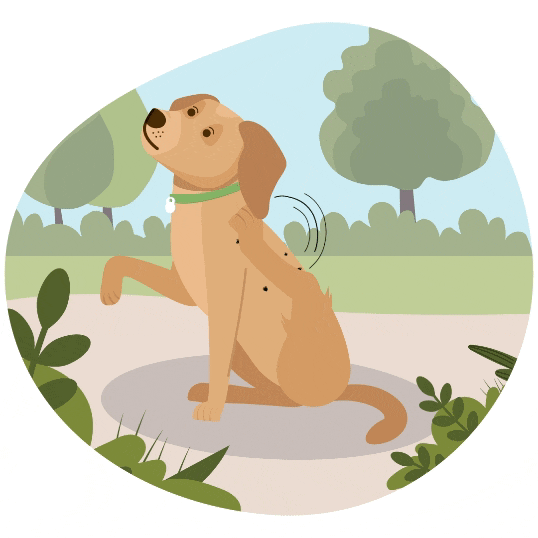
Mosquitos transmit heartworms, a disease that affects a dog's heart and lungs. All it takes is one mosquito bite for the worms to enter your dog's bloodstream and get into the heart and lungs, where the worms reproduce. If not treated in time, the larvae mature into adult heartworms and become a serious health threat.1
There is no vaccine for heartworms, but there is a monthly oral preventative that you can give your dog. They even come in a chewable form, so many dogs eat it as easily as any other treat.1
Fleas and ticks are also carriers of disease and another concern when heading outdoors with your dog, especially in wooded areas or high grass. There are several options for flea and tick preventatives, including both prescription and over-the-counter: oral medications, topical medications, collars and repellents.2 Always check for ticks after being out with your dog, just in case.
2. Use a Leash
Even if your dog is well-trained, keeping your dog on a leash not only protects them from other dogs who may not be as well-behaved but also prevents your dog from environmental dangers. A leash will keep your dog close so they aren't sniffing under rocks where snakes might be hiding out.3 It also helps discourage your dog from chasing animals that could either turn on them or cause them to sprint into the road. And it lowers the chance of them picking up unhealthy scraps (or even worse, things like discarded drugs4) that might be on the ground.
3. Educate Yourself on Poisonous Plants
A leash can also help keep your dog away from poisonous plants, but it's helpful to know what plants to avoid in the first place. Some common poisonous plants for dogs include:5
- Aloe
- American Holly
- Azaleas
- Many types of lilies
- Certain fruit trees
It's nearly impossible to memorize every single poisonous plant, so the American Society for the Prevention of Cruelty to Animals has a helpful database and a Poison Control Center that is free to call if you think your dog has ingested something poisonous.5
4. Keep Your Dog's Vaccinations Up to Date
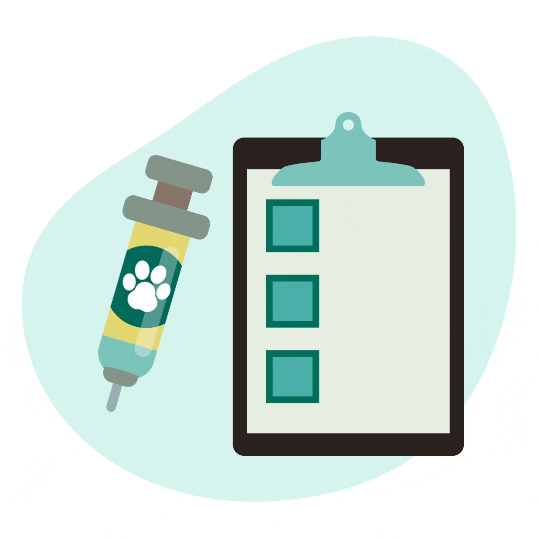
Vaccinations are especially important if your dog interacts with other dogs while on walks, in the yard or at dog parks, but a rabies vaccination can also help protect your dog if they have a run-in with wildlife like raccoons.6
Leptospirosis is another disease that dogs can contract if they come into contact with infected soil, water (stagnant water can contain a variety of diseases), urine or a bite from an infected animal. Signs and symptoms vary, but can range from mild to deadly. Leptospirosis can also be passed on to people, so while this is not one of the standard vaccines, it's a good one to consider.7
5. Microchip Your Dog and Keep Identification Tags Up to Date
Most dog owners stick identification tags on their dog's collar and call it good, but microchipping is an easy and affordable ID option, too. It is a way to ensure that if your dog slips out of their collar or isn't wearing one for some reason and gets lost, someone will be able to get your information and help your pup get home.8
A microchip implant, also called a radiofrequency identification (RFID) tag, is about the size of a grain of rice. It has no battery, no internal power source and simply stores your contact information. It can only be scanned by a special device at a veterinarian's office.8
6. Clip Your Dog's Nails
Even if your dog doesn't need regular grooming, it's important to keep their nails at the proper length. Long nails can cause all kinds of issues, from getting caught on things and breaking to more severe issues like joint problems. If your dog's nails are too long and are scraping the ground, the force can lead to pain and problems walking.9
Read Related Article
How to Trim Your Dog's Nails Safely at Home
7. Take Extra Precautions in Summer
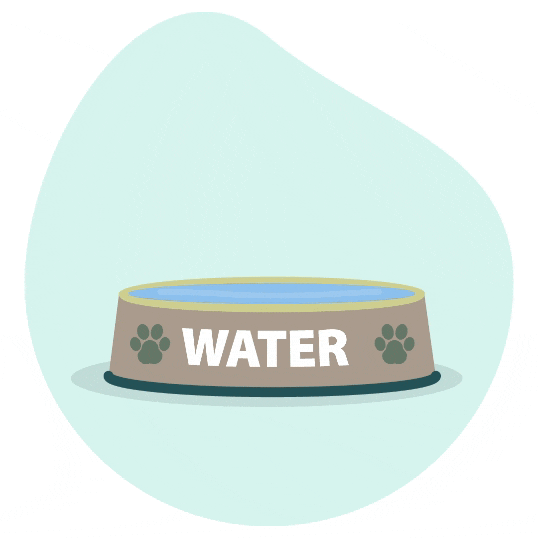
Summer is a season when people and dogs spend more time outside, and heatstroke is one of the top dangers for dogs during this season. Heatstroke occurs when their body temperature gets too high and they can't cool down.10
Heatstroke in dogs can be prevented by keeping them hydrated, going for walks in the mornings when it's cooler and ensuring your dog has access to shade.10 These precautions will also help avoid your dog burning their paws on hot pavement.
8. Don't Forget About Winter, Too
During winter, make sure you don't leave your dog outside unattended, and if it's too cold, consider shorter potty breaks or walks to prevent hypothermia. Keep things like antifreeze out of their reach, and if you come across anything spilled on the ground, keep your pup close so they don't ingest any poisons. Also, salt and other snow-melting chemicals can hurt or even burn their paws, so either avoid walking on these if possible or wipe their feet as soon as you can.11
9. Secure Your Dog When in the Car
If your outdoor adventure involves a car ride, make sure your dog is secure. A crate or carrier are the best options, but there are also harnesses available that are approved by the Center for Pet Safety. Your dog should be in the back seat, while also ensuring they have adequate ventilation.12
If you decide to lower the window, take precautions to prevent your dog from sticking their head out. Dogs love it, but there are potential dangers: bugs or rocks can hit them in the face or eyes or your dog could fall out.12
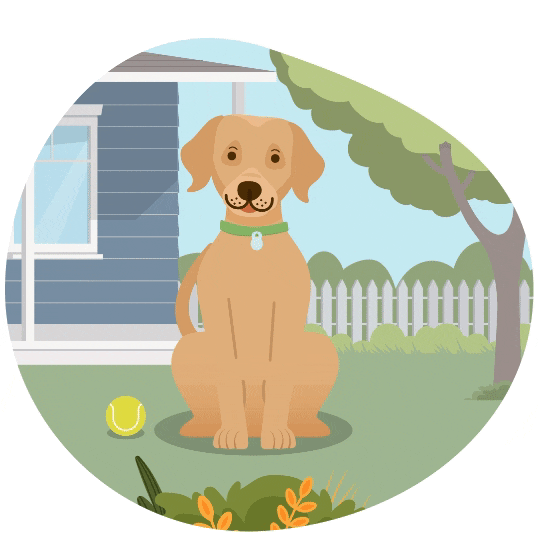
10. Make Sure Your Yard Is Safe
While all of these tips will help keep your dog safe when you're out and about, it's important to keep your home and yard safe as well. In the summer, be sure to provide shade and water for your dog to help avoid heatstroke;10 in the winter, don't leave them outside for extended periods of time if it's cold or wet.11
All year-round, you'll want to make sure you keep your dog safe in your yard from environmental hazards by pet-proofing your garden, removing any mushrooms13 and ensuring you don't have grasses like foxtails, which can cause serious problems if your dog inhales or ingests them.14
Other good practices include having a physical fence (invisible fences don't stop predators or other dogs from coming into your yard),15 fencing off your pool16 and securing your trash cans (and make sure the lid latches).
CareCredit Credit Card Financing for Dogs
The CareCredit credit card provides a convenient way to pay for your dog's vaccinations and other health and wellness expenses, including exams, medications and products at providers in the CareCredit network.* Continue your wellness journey by downloading the CareCredit MobileApp. You can find a provider on the go, manage your CareCredit account and easily access the Well U blog for more great articles, podcasts and videos. Use our Acceptance Locator to find a veterinarian that accepts CareCredit to help keep your pet healthy and happy for a lifetime of love.
In addition to pet care, you can also use your CareCredit credit card for dentistry, cosmetic, vision, hearing, health systems, dermatology, pharmacy purchases, spa treatments and so much more within the CareCredit network. How will you invest in your health and wellness next?
Author Bio
Abbie Mood is a freelance writer with more than 10 years of experience. She has worked with clients of all sizes to create compelling content and she has written for the American Kennel Club, Marriott Bonvoy, Women's Health Online, Headspace and more.






